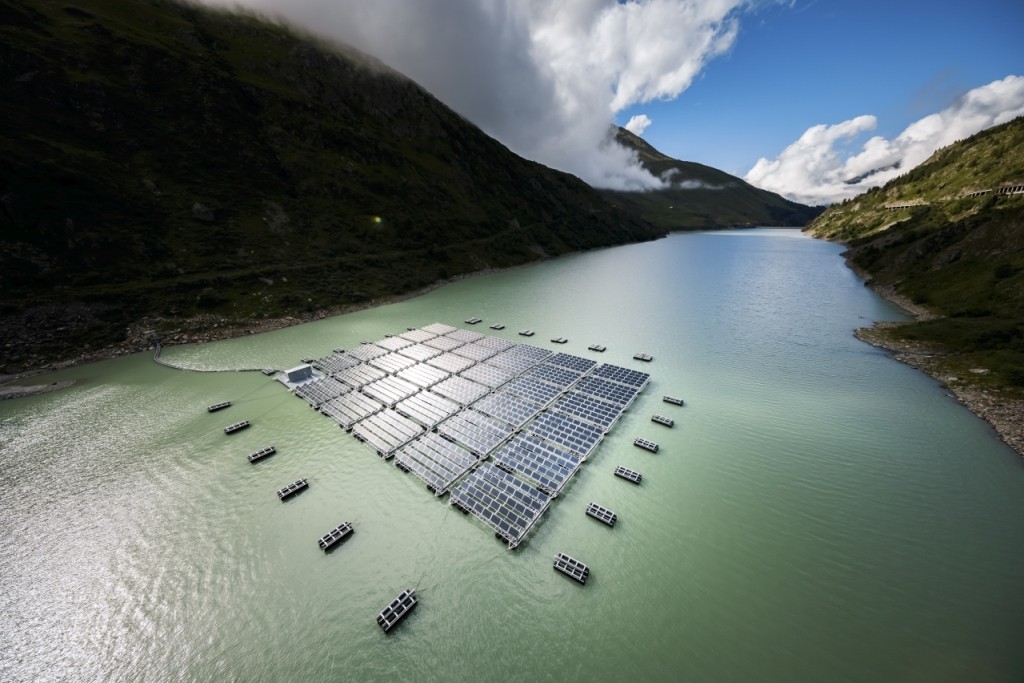Fraunhofer Institute for Solar Energy Systems (Fraunhofer ISE) of Germany has done new research into the impact of floating PV and water temperature and evaporation.
Scientists at Fraunhofer Isee have investigated the impact of floating PV on the water temperature and evaporation and have discovered that the lower solar radiation under floating PV systems in the summer led to lower water temperatures. At the same time, the floating PV reduced heat loss of the lakes in the winter, making the water temperatures slightly higher.
This can have a positive influence on the lakes as temperatures in the summer increase due to global warming. Both effects were most pronounced in the largest floating PV system that was monitored for research in Sekdoorn near Zwolle, the Netherlands. At this location, the PV modules are arranged in an East-West orientation on a metal substerance that is distributed by floats.
The change in the water temperature and other factors, such as oxygen content and food composition, on three lakes with floating PV plants were included in a research project called “FPV4Resilience, funded by the Freiburg Center for Sustainability (LZN). They had no significant influence on the water quality” of this quality of this bodies ” Increasingly hotter in the summer, this effect can be positive for the lakes in the future. First simulations suggest this, although more research is needed, “concludes a research overview.
Mossel colonies have settled on the substances of two of the floating systems. A further look at the mussels on one system showed that their breathing lowers the oxygen concentration in the water, but at the same time the mussels filter the water and bind the phosphorus. The research team also noted that other people made by people often overlap the effect of the floating photovoltaic system. This shows how complex the interaction between economic use, flora, fauna and the floating PV system is. “That is why we are not yet in the stage in which we can transfer the results of the last three years to other lakes with floating PV,” says the research group.
Structured observations of the bird population on the lake in the Netherlands documented 25 bird species on and around the water. Eleven of these were found on the floating PV system, including rare bird species such as the Lapwing and the Snipe. The birds used the system as a resting place, a starting point for hunting or for nesting.
The three artificial lakes investigated are located in various climate zones in Leimersheim, Ger-Mancy, in the Alpine Toules, Switzerland and Sekdornornornornornornornornornornorn. They differ greatly in terms of their photovoltaic coverage and system design and are used as a hydroelectric reservoirs and for sand and grind extraction respectively. Two of the floating PV systems have been in operation since 2019 and the floating PV system in Leimersheim has been in operation since May 2021.
Author: Konstantin Ilgen
This article is part of a series that is contributed by RD20A worldwide initiative of leading research institutes of the G20 countries with the aim of strengthening international cooperation in O&O and promoting innovation into a carbon-neutral society. Articles under this column are contributed by individual RD20 member institutes and are the only characteristic of the designated author (s).
For more information: https://rd20.aist.go.jp/
The views and opinions expressed in this article are the author, and do not necessarily reflect it by PV -Magazine.
This content is protected by copyright and may not be reused. If you want to work with us and reuse part of our content, please contact: editors@pv-magazine.com.

